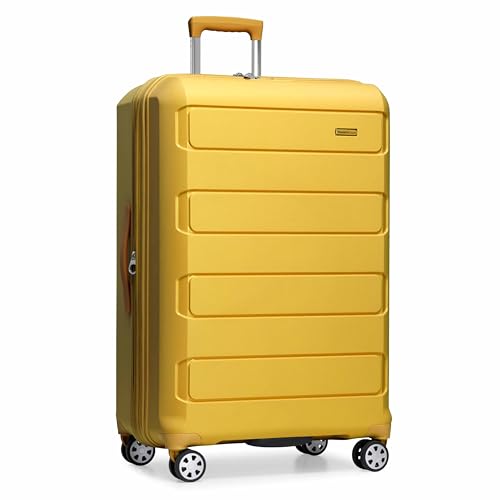



Knives and sharp objects, regardless of size, are strictly forbidden. This includes pocket knives, box cutters, and scissors with blades longer than 4 inches. Consider opting for safer alternatives if you’re tackling a woodworking project or meal prep.
Explosive materials like fireworks or flares will also face rejection at security checkpoints. If your travel plans involve a celebration, explore options available at your destination rather than attempting to transport these items.
Additionally, liquids exceeding 3.4 ounces (100 milliliters) are disallowed unless they adhere to specific regulations. This rule encompasses beverages, shampoos, creams, and similar substances. Travel-sized containers can help you stay compliant.
Sporting goods such as baseball bats or hockey sticks fall into the prohibited category as well. If sports gear is part of your trip, consider checking these items instead.
Lastly, any type of firearm or realistic replica must remain at home. This restriction extends to toy guns that resemble real weapons. Prioritize safety and be aware of local laws upon arrival.
Items Prohibited in Cabin Bags
Flammable products, such as lighter fluid or gasoline, are strictly forbidden. Keep hazardous materials away from onboard items; this includes substances like fireworks and explosive chemicals.
Sharp objects pose safety risks. Knives, scissors, and anything with a blade longer than a specified length should remain outside of personal belongings stored in overhead compartments.
Liquids exceeding 3.4 ounces (100 milliliters) are disallowed unless stored in a quart-sized bag. This policy covers beverages, gels, and creams, making it important to check container sizes before arriving at security points.
Self-defense weapons, including pepper spray and brass knuckles, cannot be packed. These items are treated as potential threats and will be confiscated during screening.
Sports equipment like bats, ski poles, and surfboards must be checked in, as they can be used as blunt instruments. Leave bulky gear in checked baggage to avoid delays.
Certain medical devices, while allowed, may require documentation. Always verify specific requirements or restrictions for items such as syringes and inhalers prior to travel.
Food items may also face scrutiny. Fresh fruits and vegetables can lead to complications due to agricultural regulations at various destinations. Always research restrictions on consumables.
Always verify rules with the airline, as regulations may differ. Prepare to adapt your packing list accordingly to avoid issues at checkpoints.
Prohibited Items: Understanding Dangerous Goods
Travelers should be aware of specific items classified as dangerous goods, as these may pose significant safety risks. Regulatory bodies scrutinize these items closely, leading to strict transportation guidelines.
- Explosives: This category includes fireworks, flares, and any device that may detonate.
- Flammable liquids: Substances such as gasoline, lighter fluid, and paint thinners are highly volatile and are forbidden.
- Compressed gases: Items like propane tanks, butane canisters, and certain aerosol sprays fall under this classification.
- Toxic substances: Pesticides and some cleaning agents are considered hazardous and should never be brought onboard.
- Chemicals: Corrosive materials like acids and alkalis are strictly prohibited because they can damage aircraft materials.
- Sharp objects: Tools such as box cutters, certain scissors, and knives are included due to their potential for harm.
Being informed of these restrictions is essential for a seamless experience at security checks. For those planning outdoor adventures, choosing the best luggage for catamaran sailing provides practicality yet safety in packing.
Beyond the implications for individual travel, understanding these rules also reflects responsible transportation practices. Misjudging what constitutes dangerous can lead to delays or legal issues. For pet owners, ensuring safety extends to wellbeing at home too; advice on safety measures includes resources like how to find a break in an underground dog fence.
Adhering to these guidelines fosters a safer traveling environment for everyone, promoting an enjoyable experience without unexpected complications.
Make sure to check regulations explicitly related to carry-on restrictions to avoid potential fines or confiscations. Additionally, the management of plants also involves precaution; for anyone interested in indoor gardening, understanding the best potting soil for umbrella plant is equally informative.
Liquid Restrictions: Know the 3-1-1 Rule
The 3-1-1 rule dictates that each traveler may carry liquids in containers of no more than 3.4 ounces (100 milliliters). All these containers must fit within a single quart-sized clear plastic bag, which should be resealable.
Ensure that this bag is presented separately during security screening. This allows for expedited checks, minimizing delays. Each passenger is limited to one quart-sized bag, so plan accordingly when packing liquids.
Exemptions exist for medications, baby formula, and food items, which do not need to fit into the quart-sized bag; however, they will require additional screening. It’s advisable to declare these items to security personnel beforehand for smoother processing.
Some common misunderstandings include solidified products, such as lip balm or solid perfumes, which are not subject to the 3-1-1 stipulation and can be packed without restriction.
Reviewing your liquid items before travel helps avoid inconveniences. Adhering to these guidelines ensures compliance with airport regulations and enhances the overall travel experience.
Electronics Limitations: What Devices Are Forbidden?
Large electronic devices, such as televisions and gaming consoles, typically do not qualify for onboard transport. Drones with lithium batteries exceeding certain capacity limits are also barred. Each airline may have specific guidelines, so always verify before traveling.
Items powered by lithium-ion batteries over 100 watt-hours are generally restricted. Devices like electric scooters, hoverboards, and certain large power banks also face similar prohibitions. Batteries alone should not exceed allowable limits to ensure compliance.
Smart devices with integrated lithium batteries, including personal mobility devices, may require prior approval or vary by airline. Consider alternative shipping options if these devices are essential.
Visual recording devices intended for professional use may require special permissions or be subject to additional scrutiny. It is advisable to limit the number of high-value electronics aboard to lessen complications upon inspection.
Food and Beverages: Items You Can’t Bring Onboard
Solid foods are generally permissible; however, certain items face restrictions based on national and international regulations. Items like fresh fruit, vegetables, and other perishable goods may be prohibited due to agricultural inspections. Meat, dairy, and seafood products often fall under similar regulations, particularly for international trips.
Regarding liquids, beverages are subject to specific limitations. The 3-1-1 rule mandates that containers must not exceed 3.4 ounces (100 milliliters) and must fit within a single quart-sized bag. Drinks purchased after passing through security may be allowed, but verify specific airline policies before traveling.
Here is a summary of popular food and drink items typically barred from aircraft:
| Item Type | Restrictions | Notes |
|---|---|---|
| Fresh Produce | Usually prohibited | Depends on destination |
| Meat Products | Often banned | Check customs regulations |
| Dairy Items | May be restricted | Varies by country |
| Liquids Over 3.4 oz | Not allowed | Includes beverages |
| Alcoholic Beverages | Limits apply | Check local laws |
To avoid inconvenience, confirm any specific restrictions enforced by the airline or your destination’s customs regulations prior to your flight. Proper planning ensures compliance and a smoother travel experience.
FAQ:
What types of liquids are prohibited in carry-on luggage?
In carry-on luggage, liquids are restricted to containers of 3.4 ounces (100 milliliters) or less. All these containers must fit into a single quart-sized zip-top bag. Common items that fall under this rule include shampoos, lotions, and beverages. Larger bottles and items exceeding this limit must be packed in checked luggage to comply with safety regulations.
Can I bring sharp objects in my carry-on bag?
Sharp objects such as knives, scissors, and razor blades are not allowed in your carry-on luggage. However, small scissors with blades shorter than 4 inches and certain tools may be permitted. It’s crucial to check the specific regulations of your airline and the Transportation Security Administration (TSA) to ensure compliance before travelling.
What items are categorized as prohibited weapons for carry-on luggage?
Prohibited weapons in carry-on luggage include firearms, explosives, and other dangerous materials. This encompasses items like guns, ammunition, and self-defense sprays. Airlines and security agencies take these regulations very seriously, and bringing such items could lead to severe consequences, including arrest and fines. Always verify any specific rules relevant to your destination as well.







